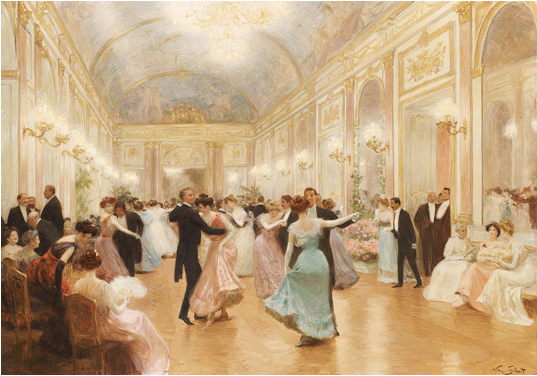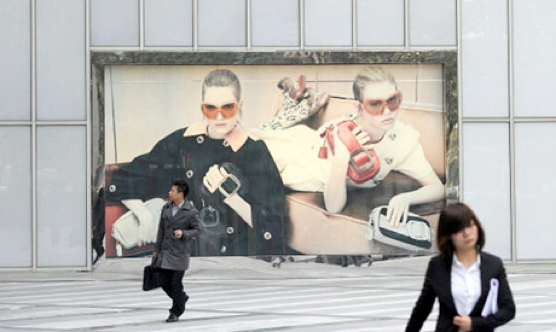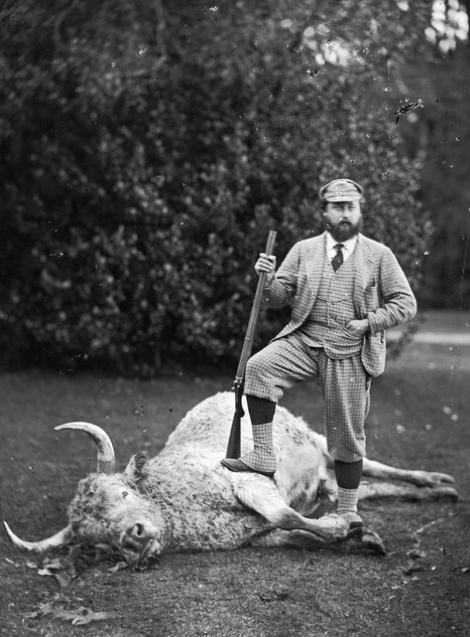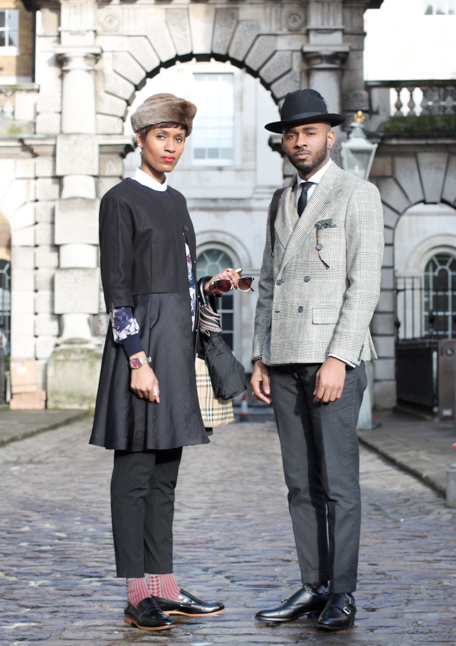‘[O]ur apparel is always in evidence and affords an indication of pecuniary standing to all observers at the first glance. It is also true that admitted expenditure for display is more obviously present, and is, perhaps, more universally practised in the matter of dress than in any other line of consumption. No one finds difficulty in assenting to the commonplace that the greater part of the expenditure incurred by all classes for apparel is incurred for the sake of a respectable appearance rather than for the protection of the person.’
Thorstein Veblen’s The Theory of the Leisure Class: An Economic Study of Institutions, published in 1899.
THE AMERICAN ECONOMIST AND sociologist Thorstein Veblen’s The Theory of the Leisure Class remains an influential work in sartorial studies, although it is typically invoked as an Aunt Sally, and a popular subject of criticism and contention. Veblen’s thesis, which is probably better known for enunciating the concept of ‘conspicuous consumption’, identified a burgeoning social elite within nineteenth-century America: the Leisure Class. By actively pursuing costly pursuits and conspicuously squandering key resources, not least, time and manual labour, this privileged coterie revealed their formidable financial resources and unassailable position at the apex of the social pyramid. Dress helped the Leisure Class maintain its position for two reasons: clothes demarcated social hierarchies and the raiment of the rulers ‘trickled down’, influencing that of the ruled. Veblen was critical of the Leisure Class’ profligacy because their motive for acquiring opulent and expensive clothes to demonstrate their wealth was fictive; possessing limited utility, Veblen considered their dress inherently ugly and considered it to become only more so as larger sums were lavished on it. But beautification was never the principle reason for such prolific expenditure; the point was to proclaim that even with such expensive, impractical and uncomfortable raiment, the elite retained their privileged position. Moreover, in post-economic crisis culture, certain signifiers of dress still function for the Leisure Class of Western societies. Tweed, for example, is a material that traditionally, and arguably still, functions as an important indication of status. A powerful and complex material, tweed is historically linked with leisure and financial expenditure; these notions are retained in its appearance in contemporary culture, but with a new sartorial complexity.

The central strands of Veblen’s thesis as they pertain to dress are widely regarded as overly deterministic. Some of his arguments are certainly questionable, which is not surprising considering the enormous changes in societal mores that have occurred between 1899, when The Theory of the Leisure Class was first published, and today. The discussion of novelty and transience in clothing trends bears little resemblance to our present fashion system. The symbols of the Leisure Class have also changed. In place of powdered wigs and gold lace, we have artisanal millinery and Gucci Horsebit bracelets. But Veblen anticipated this. He recognised that subtler socio-economic signifiers – what we might term ‘stealth wealth’ – would become prevalent as people became more cognisant of ‘delicate variations in the evidences of wealth and leisure’. One of the most compelling aspects of Veblen’s discussion, pursued further by French theorist Roland Barthes, is the idea that fashion is an expression of a diverse, mobile and economically complex society. Dress will therefore remain a crucial cultural signifier and possibly become more important as society continues to develop and grow in complexity. The demand for designer labels in China is a case in point.

Dress sociologist Fred Davis warned against the casual linkage of socio-economic shifts and sartorial innovation, but Norbert Elias, another sociologist, astutely surmised that societal developments would invariably create new opportunities for individualisation. Many commentators have observed that the recent economic downturn has affected the clothes people wear. This is particularly the case for men, who clamour to purchase time-bound accessories, from tie bars to pocket squares, as if the possession of objects from a period when their social position seemed unassailable will convey confidence and success in the present. The economic crisis has also highlighted the increasing disparity in Western incomes – recently it was reported that five families in Britain own more than the country’s poorest twenty per cent – and the propensity of the wealthy to engage in conspicuous status expenditure, from designer accessories to haute couture. The central elements of Veblen’s thesis – that clothes demarcate social hierarchies and the dress of the elite informs the sartorial choices of others – seem apposite to studies of (Western) dress today. Correlatively, it might be possible to refine Veblen’s ideas and identify a new Leisure Class in contemporary culture.
This brings us back to tweed, a fabric that has been known to play a large part as signifier for the twenty-first century Leisure Class. The textile may conjure images of academics and vicars, but photographs of British aristocrats, chiefly members of the royal family, are probably more indelible images of tweed-clad people. Photographs of King Edward VII and the Duke of Windsor in tweed present these men as the epitome of Thorstein Veblen’s nineteenth-century Leisure Class because they are engaged in hunting, a recreational activity that is conspicuously wasteful. This most historic and manly of pursuits is also enjoyed with the accompaniment of two domesticated animals, horses and dogs, which Veblen considered ‘expensive, or wasteful and useless – for the industrial purpose.’

A textile associated with aristocratic leisure, tweed has arguably become something of a sine qua non for men and women who wish to express their distance from work. Simultaneously, however, the leisure pursuits that necessitate or facilitate the wearing of tweed – most notably hunting, horse-riding and shooting – are expensive, socially exclusive and really only possible through achievements gained in the workplace. It is the reference – rather than the actual rejection – to work and economic efficiency that distinguishes the twenty-first century Leisure Class from its nineteenth-century predecessor. In line with Veblen’s original proposal, members of today’s Leisure Class continue to use dress to demarcate their social seniority and engage in conspicuous status expenditure, but the crucial difference is that the recreations enjoyed by this new Leisure Class are made possible through successes at work. Commentary on Hillary Clinton’s punishing schedule as US Secretary of State and criticism of workaholic banking cultures, reveal how hard work and busyness are accepted and expected in (Western) society.
The notion that graft, rather than greed, is good has been entrenched by the economic downturn and reflected in sartorial embellishments, especially in menswear. In the wake of the banking crisis, men spurned suits in favour of mix ‘n’ match jackets and trousers that looked less capitalist and more culturist. Headwear has proved particularly popular and recession resistant, apparently because the purchase of a hat suggests its owner has money to spare on peripheral clothing accessories. The economic doldrums have also been a boon to tanning salons as people go bronze to suggest they have the gold to travel. The recession would appear to have honed people’s sensitivity to socio-economic signifiers.

Tweed is a telltale textile because it signifies that financial and social success has been achieved in the spheres of both leisure and labour, or at least it creates that impression. A textile that was taboo in The City because of the unwritten ‘No Brown in Town’ rule (gentlemen typically wore brown away from the metropolis, so the colour became associated with leisure and relaxation, rather than labour and rigour) tweed has always retained an association with the country and recreation. But tweed is a polyvalent cloth capable of multiple significations. On the one hand, it possesses cultural prestige because of its association with the British aristocracy and elite leisure pursuits. Harris Tweed, perhaps the most famous of the tweeds produced in Britain, has a singular status as the only cloth to be protected by an act of parliament. Unlike other textiles, tweed is distinct in containing a wealth of subtle colours that enable wearers to express themselves whilst not overtly flouting sartorial conventions; it can be individual and institutionally acceptable. That said, the depths of colour within tweed, from rich reds to vibrant yellows, can be used to assert one’s personality. Vivienne Westwood’s ‘Harris Tweed’ collection of 1987 and her tweed suits for the English punk rock band the Sex Pistols demonstrate this point well. All of this means that tweed is a useful cloth to conjure with if you wish to make a sartorial statement.
Tweed has therefore become an ideal symbol for moneyed metropolitans to demonstrate their ability to work and play. For the same reason, tweed is attractive for those who wish to create an impression of socio-economic accomplishment. This explains why the textile now adorns a vast number of products – including clocks, cufflinks, headphones, hip-flasks, Dr Martens and Eames-style furniture. But it is not alone. Clothing accessories that are inherently practical, efficient and reference the world of work – chiefly watches and hand-held luggage – are key indices of people’s net worth and habitually cost thousands of pounds.

Thorstein Veblen was repulsed by the Leisure Class that he defined because of its decadence. It is interesting to reflect on how he would regard today’s Leisure Class, which is no less profligate but eminently more pragmatic.
Benjamin Wild is a London-based fashion historian, lecturer and writer.